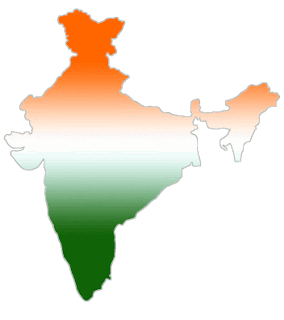Atul K. Tiwari
India, which accounts for 2.5 per cent geographical area of the world, supports 17% of global population. The population of the country now stands at 1,198 million, and likely to touch 1,613.8 million mark by 2050. In order to ensure food security for ever-increasing population of the country, additional land needs to be brought under cultivation, the productivity of existing agricultural land to be enhanced, and suitable measures need to be taken up to prevent the fertile cultivated land from degradation. Wastelands which are currently lying either unutilized or partially utilized may contribute significantly to food security. Hence the need of a National Wastelands Atlas to meet the needs of future generations.
With the objective ensuring of effective utilization of wastelands, National Remote Sensing Centre (NRSC), erstwhile NRSA/DOS, took up a nation-wide wastelands mapping on 1:50,000 scale using Landsat TM, IRS –LISS II and IRS LISS III data in 1986. The project was executed in five phases spanning from 1986 to 2000. Thirteen categories of wastelands were delineated. An estimated 63.85 M ha were delineated as wastelands.
For prioritization of wastelands for reclamation, another national level project was taken up in the year 2002-03 using IRS 1C/1D LISS III data of Rabi season wherein further categorization of wastelands based on magnitude of degradation was made. An estimated 55.64 M ha of land was mapped as 28 categories of wastelands.
In the current project, 23 categories of wastelands were delineated at 1:50,000 scale for entire country using three season (kharif, rabi, and zaid) Resourcesat-1 LISS-III images collected during 2005–06 following on-screen visual interpretation. The use of three season satellite data has helped improving delineation of wastelands particularly scrub land, waterlogged areas, scrub forests, etc..
A seamless mosaic of wastelands map of entire country in geo-database format has been prepared and the spatial extent of various categories of wastelands estimated. At national level, an estimated 47.23 M ha ( 14.91 per cent to total geographical area) land has been delineated as wastelands. The land with dense scrub with an area of 9.3 M ha is the major category of wastelands followed by land with open scrub (9.16 M ha), and the rest (8.58 M ha) of underutilized /degraded forest-scrub.
The current exercise usages improved sensor data for three season and methodology, WGS 84 datum for wider accessibility of the maps. The resulting maps and statistics should, thus, serve as a base line for regular monitoring of wastelands. Efforts are underway on similar lines for an early release of updated wasteland maps and statistics for 2008-09.
Rehabilitation of wastelands under various developmental programs, namely integrated watershed development program, DPAP, desert development program, etc., of the Government would improve the cultivable land resource base of the country, thereby increasing the agriculture production and vegetation cover which are very important elements for combating the adverse effect of global warming.



























0 Comments